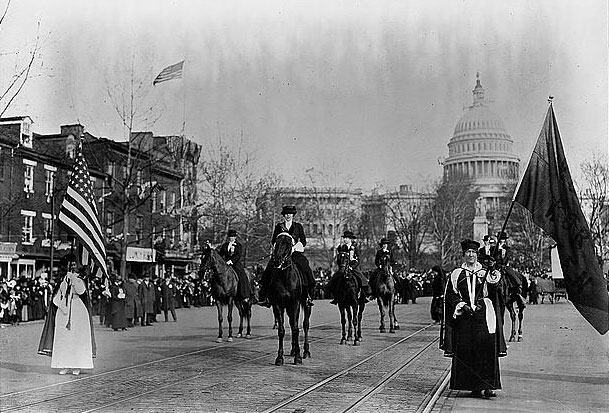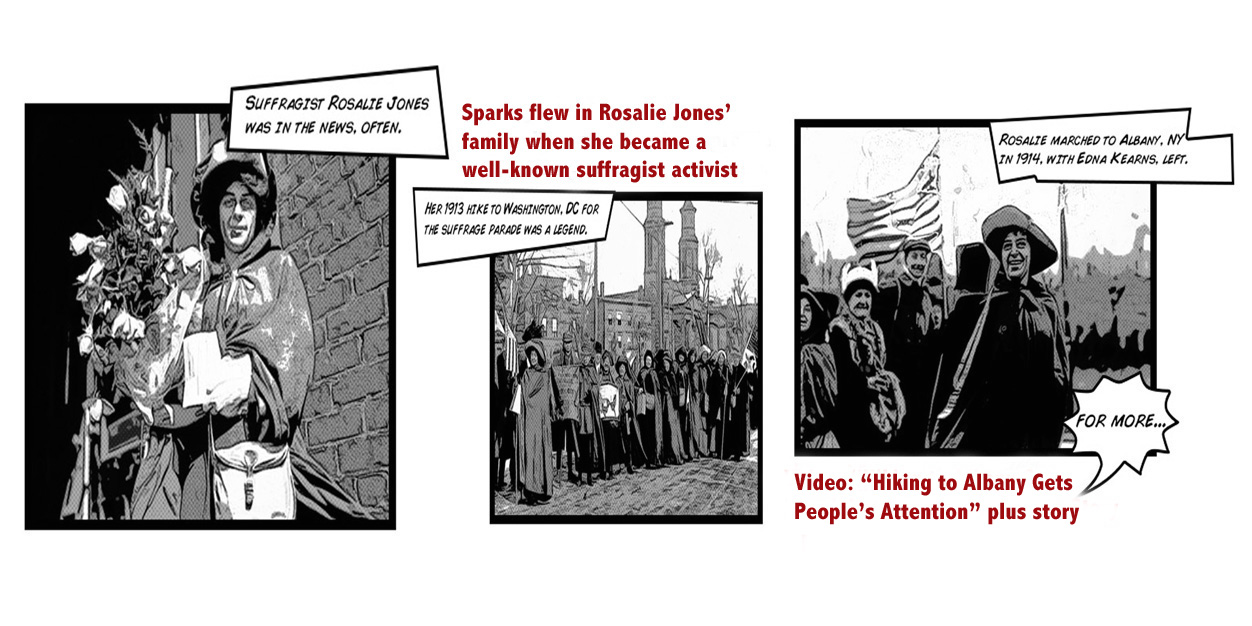 In the spring of 1914, suffrage leader Harriot Stanton Blatch continued experimenting with various forms of publicizing suffrage and purchased a used, horse-drawn van, with the intention of converting it into a roving shop. The van was moved from place to place every few days, and sold a variety of suffrage literature and memorabilia such as colorful buttons, pencils, ribbons, and even suffrage cigarettes.
In the spring of 1914, suffrage leader Harriot Stanton Blatch continued experimenting with various forms of publicizing suffrage and purchased a used, horse-drawn van, with the intention of converting it into a roving shop. The van was moved from place to place every few days, and sold a variety of suffrage literature and memorabilia such as colorful buttons, pencils, ribbons, and even suffrage cigarettes.
“Votes for Women” cigarettes caused considerable controversy within the movement when the WPU announced earlier that they would be selling them at the grand opening of their headquarters in December 1910. Many suffragists were strongly opposed to the use of tobacco, and condemned its sale in any form. The WPU version, however, was made of chocolate, a fact that was kept secret until opening day in order to create publicity through controversy. The cigarettes sold from the wagon were also probably made of chocolate.
The WPU wagon shop carried on the format of its stationary predecessor in that it served both as a retail establishment and as a platform for speakers. A side of the van folded out to allow a small platform to be let down, much in the manner of a drawbridge. Speakers emerged from the van, bringing the message of suffrage to various parts of the city.
Blatch explained to the press, “Young people move; the shop will move; democracy moves . . . youth harnessed to democracy is certainly a winner.” The shop apparently attracted many working women and men, one of Blatch’s main goals when she had organized the Equality League in 1907. As the suffrage movement became more and more popular among society women in New York, Blatch did not want to forget about workers, and the van became a way of reaching them.
The roving shop had but a limited shelf life, however. In late 1914, it was abandoned for a more permanent site, a shop on New York City’s famous Fifth Avenue. Management of the shop became one of the prized positions in the WPU, and was held by some of the wealthiest of New York socialites, including Vera Whitehouse, Louisine Havemeyer, and Helen Rogers Reid. Still, the wagon had achieved various successes. Its value was a form of visual rhetoric was enormous. Articles about it in such papers as The New York Times gave valuable publicity to suffrage, as many in the general public eagerly awaited its appearance in their neighborhoods.
Image: WPU suffrage wagon shop. From Library of Congress.
If you have an email subscription, chances are that you’re missing out on a lot of the colorful photos, graphics, and videos available on the suffragewagon.org site. If so, play us a visit. Also, check out Kenneth Florey’s web site on suffrage memorabilia.




0 Comments